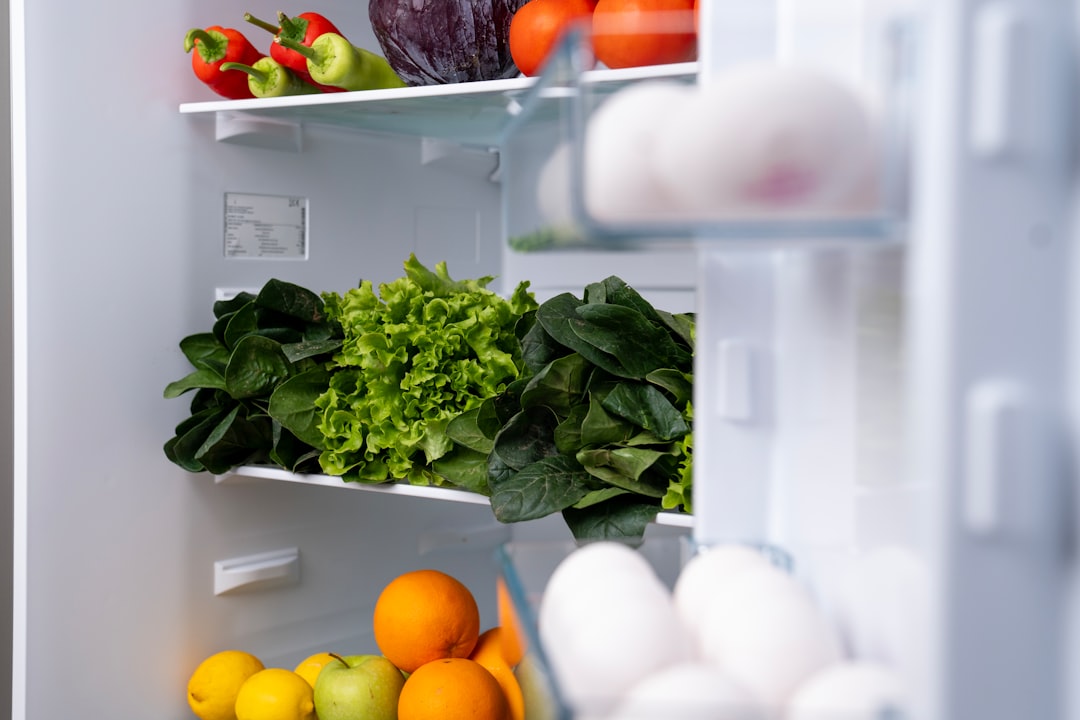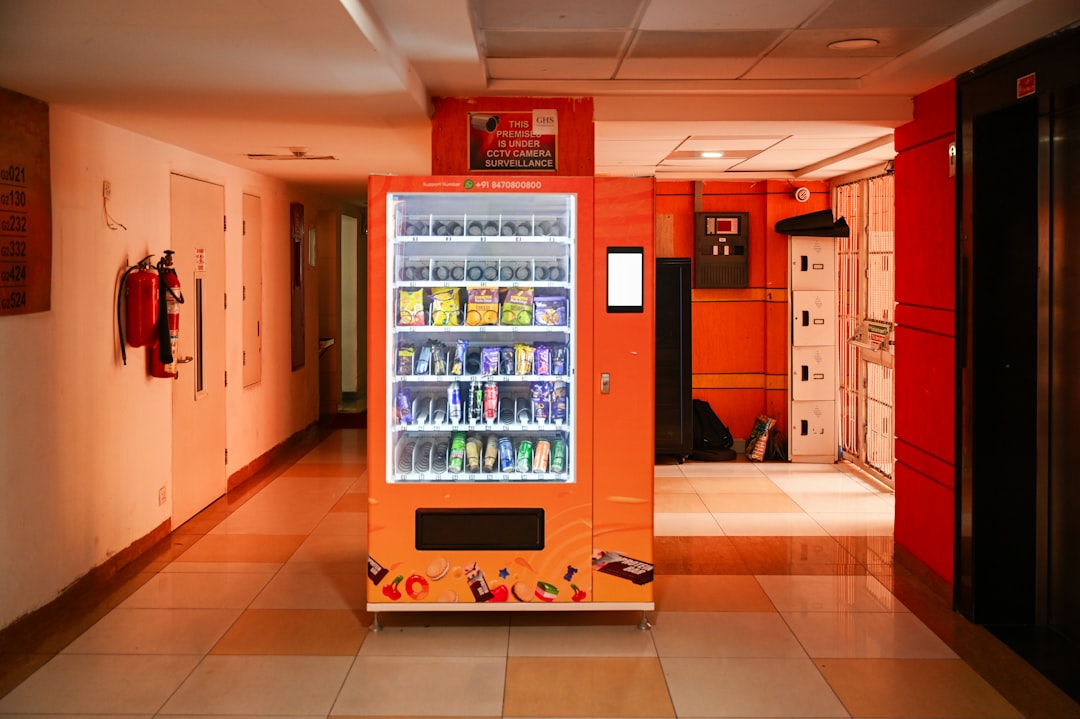

Engage prospects with a scan and streamline customer engagement with FREE QR code marketing tools by Sona – no strings attached!
Create a Free QR CodeFree consultation

No commitment

Engage prospects with a scan and streamline customer engagement with FREE QR code marketing tools by Sona – no strings attached!
Create a Free QR CodeFree consultation

No commitment
QR codes have evolved from a novelty to a strategic powerhouse in bridging offline engagement with online action. See QR marketing tips. For commercial refrigeration cleaning services, QR codes represent a seamless, straightforward, and highly effective way to boost customer convenience, ensure regulatory compliance, and streamline operations without requiring an app or complex onboarding.
Traditionally, tracking service schedules, managing compliance documentation, or obtaining customer feedback involved cumbersome paper forms, printed manuals, and follow-up phone calls. Providers often face recurring frustrations such as missing out on capturing high-value prospects when service users fail to fill out physical forms or struggling with incomplete compliance records due to lost paperwork. By embedding QR codes into physical touchpoints such as service stickers or equipment tags, commercial refrigeration cleaning companies can enable instant access to digital resources, on-the-spot booking, and real-time conversion tracking. This transition eliminates friction and overcomes common pain points around lost feedback opportunities, inaccurate compliance data, and slow service requests while revealing actionable insights and measurable improvements in customer engagement and operational efficiency.
Discover how QR technology can empower your commercial refrigeration cleaning business to create connected experiences, uncover growth opportunities, and deliver greater value both to your clients and your bottom line by solving long-standing pain points in the industry.

QR codes bridge persistent gaps between physical service assets and digital business outcomes, making it easier to provide safety information, streamline service requests, and enhance compliance in commercial refrigeration cleaning services. When a facility manager scans a code on a walk-in cooler and instantly books a cleaning appointment or verifies a sanitation record, you are replacing slow, error-prone tasks with instant, traceable actions that are more likely to convert.
In many operations, brochures sit unread, paper checklists go missing, and phone numbers on equipment stickers get buried under daily hustle. QR codes resolve these bottlenecks by offering a one-scan journey to the right destination; this includes service scheduling, digital logs, feedback forms, and training content. The result is a faster experience for customers and technicians, stronger compliance evidence for audits, and granular data that reveals what is working.
With a comprehensive QR platform, businesses can automate code lifecycle management, capture critical service intent, and sync engagement data with their CRM. QR-enabled appointment cards or service stickers transform legacy touchpoints into dynamic, trackable sources of client engagement, reducing no-shows and elevating the client experience through immediate confirmation, reminders, and simple rescheduling.
A dedicated QR stewardship approach supports every step of the digital shift, from generation and deployment through real-time analytics and CRM integration, making sure that no high-value visitor or critical compliance interaction gets missed. Platforms like Sona QR provide dynamic code editing, UTM tagging, and automated workflows that reduce manual complexity and keep campaigns aligned with operational goals.

Day-to-day frustrations in commercial refrigeration cleaning often stem from manual, disconnected processes; missed service requests, lost feedback forms, and inconsistent compliance tracking all reduce transparency and potential revenue. QR codes address these persistent challenges by converting every physical interaction into a digital action you can measure, improve, and repeat at scale, as shown in janitorial workflows.
Whether your team is trying to speed up audit responses or turn invoice handoffs into rebooking moments, QR-enabled touchpoints give customers, staff, and inspectors a clear, immediate way to act. From a business perspective, this translates into fewer missed opportunities, more reliable records, and better prioritization of field resources.
By embedding QR codes into common client-facing materials such as appointment cards, invoices, equipment labels, and compliance posters, providers create a consistent journey that is easy to follow and easy to analyze. This consistency closes the loop between interest and action, which leads to better service levels and higher lifetime value.

Commercial refrigeration cleaning services often face difficulty capturing the right audience or maintaining clear communication across touchpoints. Choosing the right QR format ensures that each scan triggers the exact action you want, whether that is a booking, a document view, or a service request.
Not every destination needs the same format. Consider who is scanning, where they are, and what they need right now. Technicians and inspectors might need Wi-Fi access or PDF records, whereas facility managers want contact info and scheduling links. A thoughtful mix of formats creates a powerful, low-friction toolkit.
Dynamic QR codes are particularly valuable when service protocols, pricing, or documentation change often. Use dynamic links for any asset you may want to update, A/B test, or track over time; reserve static codes for truly permanent resources like evergreen manuals or emergency contacts.

Growth in commercial refrigeration cleaning services is often stalled by overlooked engagement and visibility gaps. The most effective campaigns activate every physical touchpoint frequented by your offline audience, then connect those moments to digital experiences that drive conversions and retention.
When you place QR codes where decisions are made and problems occur, you shorten the path to action. You also capture context that improves segmentation: where the scan happened, what type of equipment was involved, and what time of day engagement peaked.
Adding QR codes to these placements not only reduces friction but also transforms each interaction into a measurable moment. Over time, scan analytics identify which locations and materials produce the highest ROI, allowing you to focus resources where they matter most.

Industry professionals know that even the best-run field teams can lose sight of engagement moments or compliance details when workflows stay offline. QR codes align operational needs with user expectations, making it easier to capture demand, maintain records, and keep customers happy.
The most effective use cases reflect everyday interactions: a kitchen lead checking cleaning intervals, a manager scheduling a visit, or an inspector validating MSDS sheets. These QR-driven journeys are fast to deploy and deliver measurable outcomes right away.
Each of these use cases turns a physical touchpoint into a digital conversion moment. When you standardize them across accounts, you gain a consistent data stream that improves routing, resource planning, and revenue forecasting.
One major barrier to personalized marketing in this industry is that much of the engagement happens offline and remains anonymous. Unique QR codes at each physical touchpoint change that dynamic by capturing intent, context, and behavior that can be synced to your CRM, email tools, and ad platforms.
When every scan is tagged to the right asset, location, and call to action, you can segment audiences without extra steps from the user. This reduces noise in your lists and gives sales and marketing a clean signal to act on.
Sona QR simplifies this process by giving you a centralized dashboard for code creation, tagging, and integrations. Instead of relying on guesswork, you can build audiences based on real behavior and align your messaging to what the customer actually needs. For tactical targeting, use Sona’s Playbook Intent-driven retargeting.
Disconnected offline and online campaigns can create inconsistent messaging, wasted spend, and customer confusion. QR codes act as the bridge that lets each channel contribute to a coherent journey: from awareness to consideration to conversion and retention.
By making every printed item, work order, and onsite sign scannable, you bring those channels into your analytics stack. This increases accountability for each asset and clarifies which investments are producing revenue.
Modern QR management platforms like Sona QR support full-funnel integration by connecting scan insights to CRM and analytics tools. This reduces campaign disconnects and provides a single source of truth for decision making.
A clear process ensures your QR campaigns are consistent, scalable, and measurable. Use this checklist to move from idea to execution with confidence and to align your team on what success looks like.
The following steps are designed for commercial refrigeration cleaning teams that want to replace analog friction with digital momentum. Adapt the examples to your environments and target accounts.
A systematic QR solution automates these steps, delivers real-time insights, and safeguards against inconsistencies. As your program matures, standardize templates, naming conventions, and UTM schemas so anyone on your team can deploy and measure QR assets with confidence.
Measuring QR campaign ROI can be difficult when data is siloed or limited to scan counts. The goal is to connect scans to outcomes such as booked cleanings, contract renewals, and cross-sell wins, then use that intelligence to guide budget and strategy.
Advanced tools make it possible to see who scanned, where, and when, and to attribute downstream actions to the original touchpoint. This turns QR codes from a convenience into a performance channel that earns investment. See Sona’s blog on offline attribution.
Sona QR captures real-world scan events with time, device, and location context. Sona.com extends that capability with identity resolution and multi-touch attribution so you can trace influence across channels and understand how QR interactions contribute to pipeline and closed revenue.
Maximize QR-driven engagement and regulatory compliance by adopting practices that fit your environments and buyer journeys. The right combination of unique codes, clear CTAs, and automated follow-up will raise scan rates and improve outcomes across accounts.
As you expand, document your playbook: code templates, UTM standards, recommended placements, and sample copy. This ensures consistency and enables faster deployment by sales, operations, and field teams.
Over time, pair these tips with quarterly reviews of scan trends, conversion funnels, and content performance. Use findings to reallocate placements, adjust messaging, and refine destinations for the highest possible return.
Forward-thinking commercial refrigeration cleaning companies are putting QR codes to work to solve pervasive headaches such as missed compliance documentation, lost customer interactions, and invisible engagement. These examples illustrate how modest changes to physical touchpoints can create measurable gains.
Consider how similar tactics could be adapted to your environment and client mix. The goal is to deliver immediate value at the moment of need, then follow through with data-backed optimization.
Attaching QR-based micro-surveys to job completion forms has also transformed service insight collection. Feedback is more frequent, more specific, and more actionable, which strengthens referral engines and directs upsells to customers who are most likely to say yes.
Avoiding overlooked pain points is key to unlocking ROI from QR deployments. The most successful teams put the user first, test before scaling, and maintain a strong feedback loop between field insights and marketing analytics.
As you expand, do not assume a one-size-fits-all approach. Kitchen staff, franchise owners, and inspectors have different needs and scanning contexts; tailor your calls to action and destinations accordingly.
These recommendations address common barriers such as low adoption, poor attribution, and inconsistent execution. A disciplined approach turns QR codes into a durable growth lever rather than a short-lived experiment.
QR codes are more than a passing trend in commercial refrigeration cleaning services; they are a practical bridge that transforms legacy physical workflows into seamless, measurable digital experiences. If your team struggles with invisible engagement, incomplete compliance data, or inconsistent client communications, QR codes offer an immediate, scalable solution.
Leaning into this technology delivers benefits that compound over time. Every sticker, invoice, and poster becomes a portal to the next best action, then each action becomes a data point you can refine and improve.
With thoughtful QR management embedded into your processes, commercial refrigeration cleaning businesses can address overlooked bottlenecks and lead the field in compliance, efficiency, and customer satisfaction. Start by turning your highest-traffic touchpoints into scannable entry points, then connect scan insights to your CRM and marketing tools for ongoing optimization.
Start creating QR codes for free. Set up dynamic codes, embed UTMs, and sync engagement to Sona.com for revenue attribution and full-funnel visibility. When every scan becomes a signal and every signal informs action, your offline moments turn into measurable outcomes that compound into growth.
QR codes have revolutionized commercial refrigeration cleaning services by transforming routine maintenance and client communication into seamless, measurable interactions. They empower service providers to streamline access to cleaning schedules, safety protocols, and equipment history, enhancing transparency and boosting customer trust. Imagine instantly sharing up-to-date cleaning reports or maintenance instructions with clients via a simple scan—improving satisfaction and reducing follow-up calls.
With Sona QR, you gain the ability to create dynamic, trackable QR codes that can be updated on the fly without reprinting, ensuring your clients always have access to the latest information. Every scan delivers actionable insights, helping you optimize service delivery, demonstrate compliance, and grow your customer base through enhanced engagement. Start for free with Sona QR today and turn every scan into a stronger client relationship and a cleaner, safer refrigeration environment.
QR codes provide instant, traceable access to service scheduling, compliance documentation, and feedback collection, improving customer convenience, regulatory compliance, operational efficiency, and enabling measurable digital engagement.
QR codes enable real-time access to up-to-date cleaning logs, safety protocols, and certification documents, reducing errors and lost paperwork while simplifying audit processes and ensuring consistent compliance verification.
Common QR code formats include web links for booking and resources, vCards for contact sharing, forms for feedback and issue reporting, Wi-Fi access codes for technicians, and PDF downloads for checklists and safety sheets.
By using centralized analytics dashboards that monitor scan performance by location, time, and device, connecting scans to business outcomes like bookings, and integrating data with CRM and marketing automation tools for attribution and optimization.
Best practices include assigning unique codes by asset or location, placing codes in high-traffic and relevant spots such as equipment stickers and compliance posters, using clear calls to action, testing scannability, and training staff and clients on their use.
QR codes on invoices or service reports enable easy rebooking and feedback submission, capturing upsell and retention opportunities by reducing friction and automating follow-up communications based on scan interactions.
Dynamic QR codes allow remote updates to linked content such as cleaning schedules and safety protocols, reduce printing waste, minimize compliance risks, and support A/B testing and detailed tracking over time.
By placing QR codes near walk-in doors or control panels that open pre-filled incident forms with photo upload and priority options, companies can accelerate issue triage and ensure accurate, timestamped documentation.
QR codes reduce administrative workload, lower costs associated with paper-heavy workflows, centralize records for audit readiness, and improve marketing budget efficiency through measurable performance and better resource allocation.
By replacing printed materials with digital access points, QR codes reduce paper waste and printing needs, promote up-to-date information sharing, and support sustainability initiatives in operational workflows.
Use Sona QR's trackable codes to improve customer acquisition and engagement today.
Create Your FREE Trackable QR Code in SecondsJoin results-focused teams combining Sona Platform automation with advanced Google Ads strategies to scale lead generation

Connect your existing CRM

Free Account Enrichment

No setup fees
No commitment required

Free consultation

Get a custom Google Ads roadmap for your business






Launch campaigns that generate qualified leads in 30 days or less.
